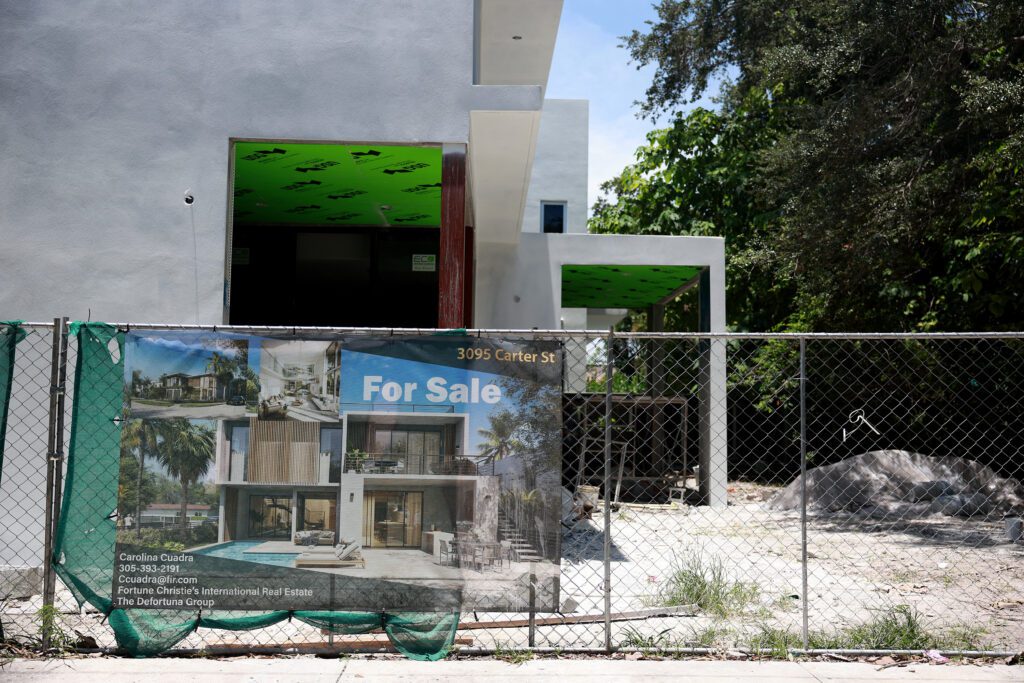Florida Housing Market 2024: Steep Price Drops Amid Inventory Surge and Rising Costs
The Florida real estate market is witnessing some of the steepest price declines in the nation as a surge in housing inventory meets buyer hesitancy. This trend is driven by historically high mortgage rates, escalating homeowners association (HOA) fees, and soaring home insurance costs — factors that are reshaping the Sunshine State’s housing landscape in 2024.
Florida Home Prices Trending Downward Despite Nationwide Growth
The median sale price for a typical single-family home in Florida reached $415,000 in May 2024, marking a 2.7% decline from the previous year, according to recent data from Florida Realtors. This contrasts with the broader U.S. housing market, where prices continue to rise, albeit more slowly than in previous years.
However, not all Florida markets are following the same pattern. While some cities experience sharp declines, others like Miami continue to witness growth in home prices amid this general statewide downturn.
Top Florida Markets with the Steepest Home Price Declines
Several metro areas in Florida report substantial year-over-year drops in median home prices:
-
Naples Metropolitan Statistical Area (MSA):
[link-whisper-related-posts]- Median Price: $767,800
- Decline: 19.2%
- Includes Immokalee and Marco Island
-
Punta Gorda:
- Median Price: $325,000
- Decline: 14.5%
-
The Villages:
- Median Price: $347,000
- Decline: 11.3%
-
Sebastian-Vero Beach:
- Median Price: $386,190
- Decline: 10.2%
-
North Port-Sarasota-Bradenton:
- Median Price: $475,000
- Decline: 9.9%
- Cape Coral-Fort Myers:
- Median Price: $375,000
- Decline: 9.6%
“There is a clear divergence from last year’s price levels starting to emerge,” noted Florida Realtors Chief Economist Dr. Brad O’Connor. “Still, prices remain in the neighborhood of where they’ve been since early 2022 and are 54 percent above where they were at this time in 2020.”
Conversely, some Florida MSAs buck the downward trend with price gains or stability from May 2023 to May 2024:
- Gainesville: +6.6% to $376,000
- Sebring: +3.6% to $285,000
- Ocala: +1.8% to $295,000
Why Are Florida Home Prices Falling in Certain Cities?
Several key factors contribute to the price declines observed in specific Florida housing markets:
1. Elevated Inventory Levels
Florida’s inventory has increased beyond pre-pandemic levels. Recent Redfin data indicates 225,020 active listings as of June 2024. This surge has resulted from:
- An ongoing construction boom fueled by pandemic-era demand.
- Slowing sales due to affordability challenges.
In June, Florida saw 31,847 homes sold, marking a 4.1% drop year-over-year, while 31.6% of listings experienced price reductions—a slight increase from the previous year.
2. Slower Home Turnover
As explained by Tim Weisheyer, 2025 Florida Realtors President, “Back in 2021, homes sold in under 10 days, often never showing up in monthly inventory. Now, many homes take 40-plus days to go under contract, effectively raising inventory counts.”
This extended market time provides buyers with a rare opportunity to:
- Compare multiple options
- Negotiate offers
- Avoid high-pressure bidding wars
“It’s a healthier market dynamic for the long term,” Weisheyer said. “Sellers are adapting, especially where new construction offers strong competition, creating a more balanced market.”
3. Market Competition with New Construction
In regions like Southwest Florida, existing homeowners face stiff competition—not just from other sellers, but builders motivated to sell quickly. Builders often offer incentives such as interest rate buy-downs, intensifying price pressure in the resale market.
4. Regional Challenges Due to Hurricanes and Regulatory Changes
Certain cities endure unique obstacles:
-
Naples: Tourism and jobs were hit hard by Hurricane Ian, impacting real estate demand. Additionally, new safety regulations have disrupted the condo market, increasing for-sale inventory as buyers retreat amid rising insurance costs and natural disaster concerns.
- Punta Gorda: Facing similar hurricane-related insurance hikes and higher replacement costs, prices have declined notably in this recovering metro.
What This Means for Florida Homebuyers
For prospective buyers, the current market offers advantages rarely seen in recent years:
- Greater selection and longer decision-making windows.
- Potential bargaining power due to price drops and slower sales.
- Opportunities to avoid bidding wars common in previous market peaks.
However, buyers must remain mindful of:
- The continuing rise in home insurance premiums due to climate risks.
- Increasing HOA fees that may affect overall affordability.
- Persistently high mortgage rates that dampen demand.
Conclusion: A New Phase for Florida’s Housing Market
The Florida housing market is clearly transitioning to a new normal. While some metros endure steep price adjustments fueled by increased inventory and market competition, others maintain robust growth amid evolving economic and environmental challenges.
To stay ahead, potential homeowners should keep an eye on:
- Regional market trends
- Regulatory changes
- Mortgage and insurance costs
These factors will shape Florida’s real estate landscape in 2024 and beyond.
For ongoing updates on Florida’s housing trends and advice for homebuyers, consult authoritative sources like Florida Realtors and Redfin.


